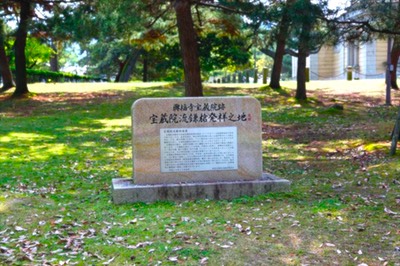It was on one of his musha shugyō that Musashi visited Nara and stayed at the Hōzō-in, the monastery associated with the legendary master of sōjutsu, the art of fighting with the yari, Hōzōin Kakuzenbō In’ei. In’ei was a direct descendant of the Nakanomikado, a line of sôhei associated with Nara’s Kōfuku temple. Drawing on their traditions, In’ei had founded his own school, the Hōzōin-ryū.
In’ei was also known for his mastery in the art of swordsmanship, an art he had first acquired under the tutelage of Toda Yosaemon, an exponent of Nenami Okuyama Jion’s Nen-ryū, believed to be the oldest school of swordsmanship in Japan. It was said that, in total, In’ei had studied under as many as forty different masters of various weapons, chief among them the yari, the naginata, and the tachi. In’ei had long been the chief abbot of Nara’s Hōzō monastery, but he had retired from his duties to dedicate his last few years to the perfection of his art.
In’ei, at the time he and Musashi met, had just turned eighty-four. Unable to engage in combat with Musashi himself, he pit Musashi against one of his senior pupils, the talented Okuzôin. The Nitenki describes how that same evening Musashi and Okuzôin met in the grounds of the Hōzō monastery to test each other’s strength in a friendly duel:
試合は、奥蔵院が得意の槍をもって構えたのに対し、武蔵は短い木剣一本のみでこれに対峙。奥蔵院が切っ先鋭く攻めかかったものの、武蔵は次々とその槍先をおさえ、ついには何の技もほどこさせないまま、相手に敗北を認めさせるのでした。武蔵の技量に感服した奥蔵院は、武蔵を泊めてもてなし、武術談議に花を咲かせて一夜を明かしたといいます。
The monk was armed with his yari. Musashi had chosen a short bokutô. They fought two bouts, but in neither was the monk able to gain the upper hand. At length he bowed, expressed his deep admiration for Musashi’s art of fencing, and asked him to stay at the Hôzô monastery, where he personally entertained him. They talked about the martial arts until dawn, when, at the sign of firat light Musashi again departed.
The former site of the Hōzō-in
Any queries of remarks? Launch or join a discussion at our new FORUM
